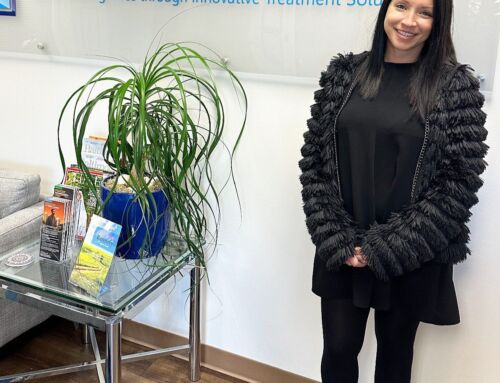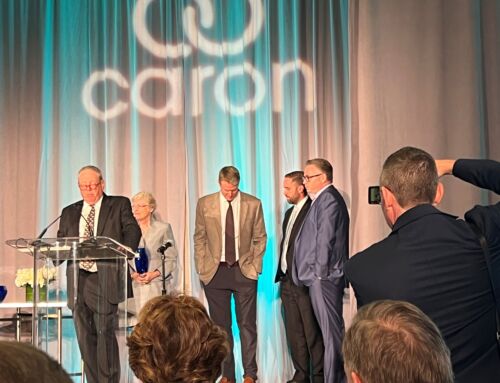There is little argument that Americans live in what is called a “quick fix” society. Call it what you want: a fast paced society, a microwave society, an “I want it now!” society, but whatever you want to call it, there is little argument that we live in a society that wants immediate solutions for problems.
The medical community and the pharmaceutical industry are good examples of entities that have financially benefited from giving Americans what they want. The best example of the American quick fix society problem is this: Whenever I’m feeling sick, give me a pill so I can feel better immediately. Americans don’t like and don’t want to wait. Headache? Give me a pill. Indigestion? Give me a pill. Feeling a little depressed or anxious? Here are two pills.
Sometimes this is a good thing, but sometimes it is not. As a society, we have become equipped to expect immediate results and that can cause issues when immediate results are not available. Take mental health and addiction. Mental health conditions like depression or anxiety may call for medication as appropriate treatment, but often times environmental or behavioral changes like diet, sleep and exercise can be effective solutions. However, those solutions take time to work and therefore most Americans would prefer to pop a pill than cut out dairy or go for a run. Addiction is another good example. People suffering from substance use disorders most often have spent years putting dangerous substances in their bodies, but when it comes to getting clean and sober they want as quick a fix as possible. If treatment requires anything that at all causes them discomfort, they’re not interested. This is why Big Pharma is making billions by pushing medication as the solution to the opioid epidemic. Oh, you’ve been abusing OxyContin and heroin for 15 years and you don’t want to be at all uncomfortable while those drugs are leaving your system, your brain is healing and you are learning a completely new way to life and to cope and to react to life? That makes sense. Here’s a pill that will fix everything.
This incessant need for immediate relief from what ails us is the reason that recovery rates are so poor and that more and more attention is being turned to Big Pharma to help fix the opioid epidemic that they themselves helped to create in the first place. Treatment for mental health and addiction takes time. Mind, body and spirit, emotions, behaviors and more are negatively impacted during the course of someone’s addiction and effective, ethical and appropriate treatment takes time to address and treat all those issues. This is not like popping a pill because someone has high blood pressure and the pill regulates the blood pressure to normal rates. Addiction is not like that, but the needs of patients and their families to seek the quickest, least uncomfortable option that will give instant, immediate relief has damaged the addiction treatment community. Big Pharma wants to push quick fix pills and medications. Insurance companies want to push quick, financially viable options that shorten treatment and do not allow for appropriate patient care. Little Johnny just wants to pop a pill so he’s not withdrawing anymore and his parents want the quickest, cheapest option that doesn’t cause him any pain. None of these are to be blamed. They each do what is in their interest. Big Pharma and the insurance companies worry about big dollars and bottom lines. Little Johnny has been suffering from addiction for years and simply wants relief, right here right now. His parents are being parents and don’t want to see their child suffering or in pain. Unfortunately, effective addiction treatment doesn’t work that way and often does not align with everyone’s desires.
Quality, holistic, effective addiction treatment is not popping a pill from Big Pharma nor allowing the insurance company to discharge Little Johnny after 3 days of treatment because some doctor in Missouri who is paid to watch the bottom line has deemed that Little Johnny’s treatment in New Jersey isn’t of “medical necessity.” Quality, holistic, effective addiction treatment also may not be comfortable (physically, mentally or spiritually) for Little Johnny or his parents. Years of behaviours that have supported addiction need to be unlearned and underlying issues will surface once the patient is off substances for a little time. Just because Little Johnny is detoxed and three weeks sober does not mean he is better or healthy. More treatment is needed and this can be difficult for both patient and family.
Quick fixes and a painless process do not align with effective addiction treatment. In addiction treatment, time is our friend and the longer someone is in treatment the better the recovery outcomes tend to be. However, that time can be uncomfortable and difficult for patients and their families. Truth must be uncovered; behaviors need to be changed; relationships need to be altered and restructured; often the entire way that a patient views and reacts to life needs to be discarded for a new way of thinking and reacting. This type of change takes time and it won’t happen immediately and it will never happen quickly. The more someone looks for a quick fix to their or their loved one’s addiction, the more pain and agony they will endure over time and the longer it will take them to find effective sustainable recovery.
If you or someone you know is in need of help because of drug and/or alcohol abuse or addiction, please give us a call. Maryland Addiction Recovery Center offers the most comprehensive dual diagnosis addiction treatment in the Baltimore, Maryland, Washington, DC and Virginia area. If we aren’t the best fit for you or your loved one, we will take the necessary time to work with you to find a treatment center or provider that better fits your needs. Please give us a call at (410) 773-0500 or email our team at info@marylandaddictionrecovery.com. For more information on all of our drug addiction and alcohol addiction services and recovery resources, please visit our web site at www.marylandaddictionrecovery.com.

Table of Contents





